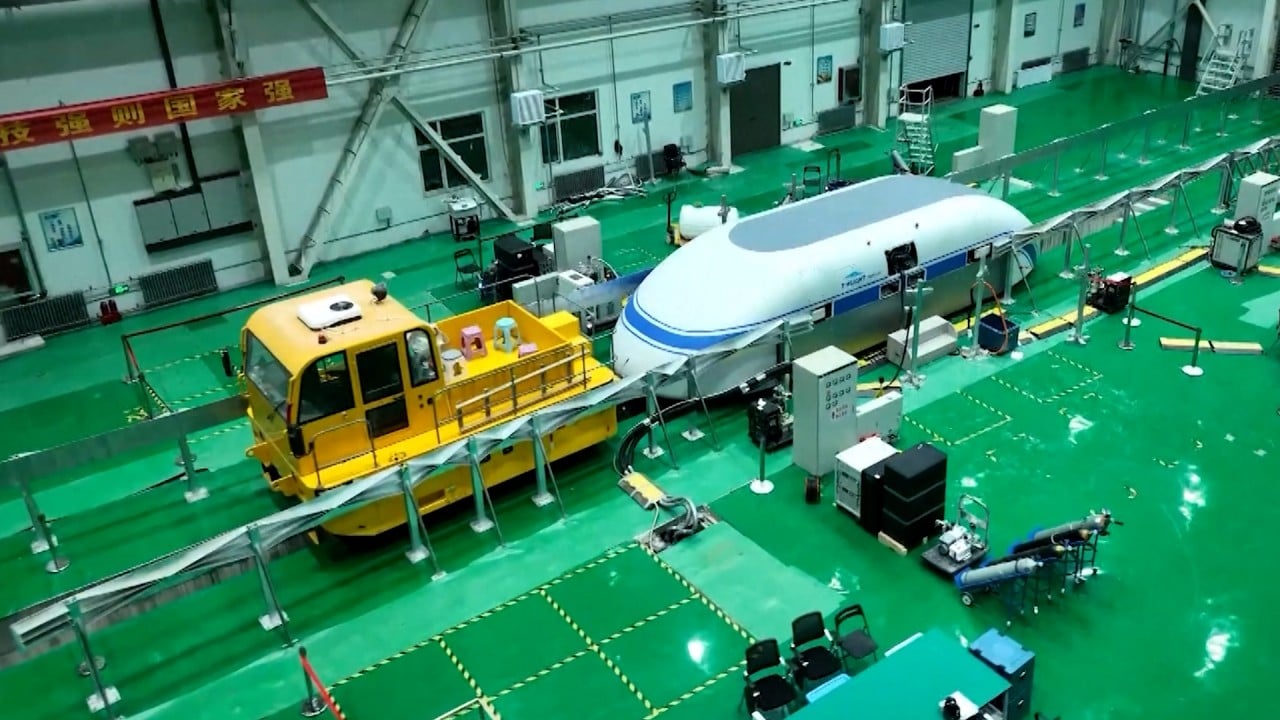
Explainer | What are superconductors and why are scientists sceptical about the LK-99 ‘breakthrough’?
- Many claims about discovering room-temperature superconductors have fallen flat but the hope of finding revolutionary material pushes research forward
- China places a high priority on the field and has funded major research projects with a strong, nationwide talent team
From national laboratories in the United States and India to universities in China, teams have scrambled to replicate the experiment. Most have failed, but a couple of exceptions claim partial success.
Critics said the manuscripts, uploaded to the preprint platform arXiv and waiting to be peer reviewed for publication, contained low-quality data and were not worth investigating.
“I work in the field and we discussed the preprint a bit in the research group this morning. In short, we don’t believe a word of it,” a German experimental physicist wrote on his blog last week.
And a theorist at the Argonne National Laboratory in the US told Science magazine: “They come off as real amateurs. They don’t know much about superconductivity.”
Since superconductivity was discovered in 1911, researchers in the field have won five Nobel Prizes, with room-temperature superconductivity seen as the holiest of holy grails.
Although a lot of big claims about room-temperature superconductors have fallen flat in the past, the hope of finding such a material to revolutionise technologies and lives has kept enthusiasts pushing forward.
What is room-temperature superconductivity?
All materials have some amount of electrical resistance at normal temperatures. As electrons flow from one end of the material to the other, they keep colliding into atoms and are slowed – similar to the slowing of air as wind blows through tree leaves.
In 1911, Dutch physicist Heike Kamerlingh Onnes made an unexpected discovery when he was cooling materials to unprecedentedly low temperatures and measuring their properties. He found that the electrical resistance of a mercury wire took a sharp dive at about 4 kelvin above absolute zero (-269 degrees Celsius or -452 Fahrenheit).
Kamerlingh Onnes then made a closed circle from the mercury wire and started a current. The current persisted as long as he kept the wire cold. Electrical resistance seemed to have disappeared, and mercury became the first superconductor with its super ability to conduct.
Could Chinese team’s viral LK-99 video offer clue to superconductor holy grail?
After that, scientists found superconductors made of other elements, all at very low temperatures. In 1986, the discovery of the first so-called high-temperature superconductors – which needed to be cooled to 35 kelvin (-238 degrees Celsius) – sparked enormous interest among scientists and the public alike.
Instead of using expensive coolant gases such as liquid helium to get materials near absolute zero, the temperature is much easier to reach with cheap and readily available liquid nitrogen.
However, the pursuit of warmer superconductivity did not advance as fast as hoped, and superconductors remained stuck at cold temperatures.
In recent years, some hydrogen-based compounds were found to superconduct at warmer temperatures. However, this happens only when the materials are squeezed under pressure as huge as 1-2 million atmospheres.
Therefore, the real challenge is to find a material that can conduct electricity without resistance at an everyday temperature (27 degrees Celsius) and pressure.
More China scientists challenge superconductor bombshell from US team
Why are room-temperature superconductors important?
Room-temperature superconductors – if they are ever found and economically mass-produced – would make magnetic resonance imaging (MRI) much more affordable because it would no longer require liquid helium to cool the scanner’s huge detecting tube.
With room-temperature superconductors, electrical power grids would be at least 20 per cent more efficient than today’s grids, maglev trains could run further at lower cost and particle accelerators and nuclear fusion devices could operate much more cost-effectively.
Room-temperature superconductors could also help make highly efficient motors and generators for devices such as wind turbines to further decrease the cost of electricity they generate and make renewable energy cheaper.

Why the controversy?
While there have been inspiring claims in the hunt for room-temperature superconductivity, none has survived scrutiny.
In 1987, after a compound called YBCO was identified as a high-temperature superconductor, some researchers thought they spotted hints of the compound developing superconductivity at room temperature. However, they disappeared on closer inspection.
Papers claiming to have found room-temperature superconductors have been shared on arXiv but many lacked key information for duplication experiments.
Some were based on unreliable data. Others were likely false interpretations of the experimental phenomenon. They were jokingly known as USOs, or “Unidentified Superconducting Objects”.
What is China doing in terms of superconductivity?
China has been a major player at the forefront of superconductivity research. Like Japan and the US, the Chinese government places a high priority on the field and has funded major research projects with the goal of searching for room-temperature superconducting materials.
China enjoys a strong, nationwide talent team led by the Institute of Physics under the Chinese Academy of Sciences (CAS) in Beijing, together with other CAS institutes and universities, such as the University of Science and Technology of China in Hefei, Nanjing University and Zhejiang University.
Xi pledges more funds for Chinese research in face of global competition
Chinese physicists led the discovery of iron-based high-temperature superconductors which work at 55 kelvin (-218 degrees Celsius). Their work was highlighted in Science magazine as one of its top 10 breakthroughs of the year in 2008, and followed the discovery of the first high-temperature superconductors based on copper oxide in the 1980s.
In 2014, Chinese theorists predicted that hydrogen-based compounds might become superconducting at temperatures as high as 204 kelvin (-69 degrees Celsius), which was proved by German researchers a year later.



